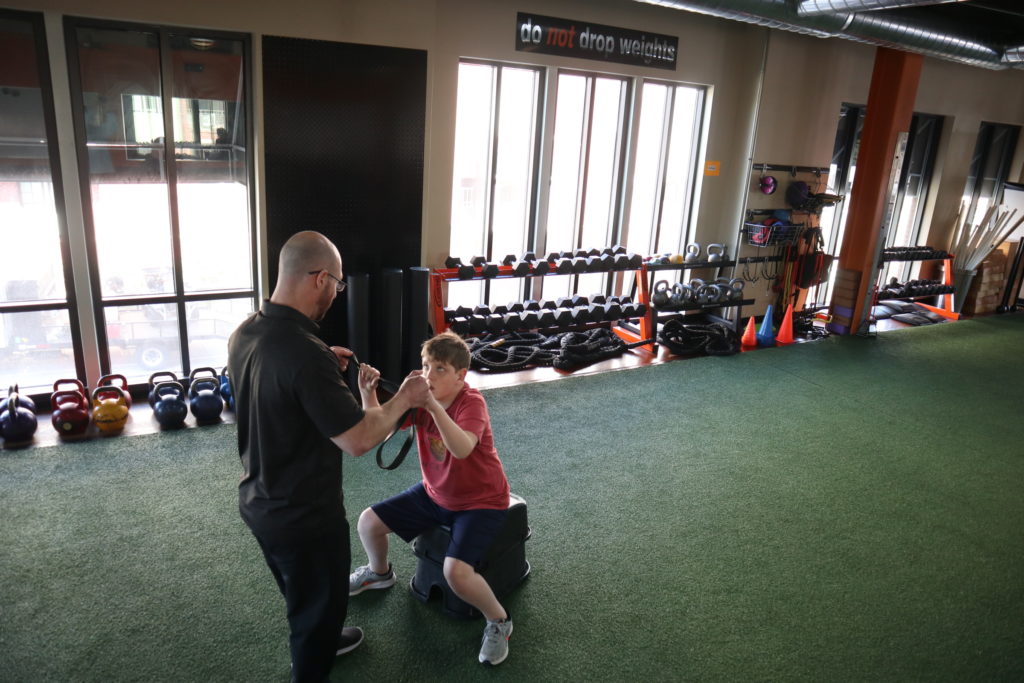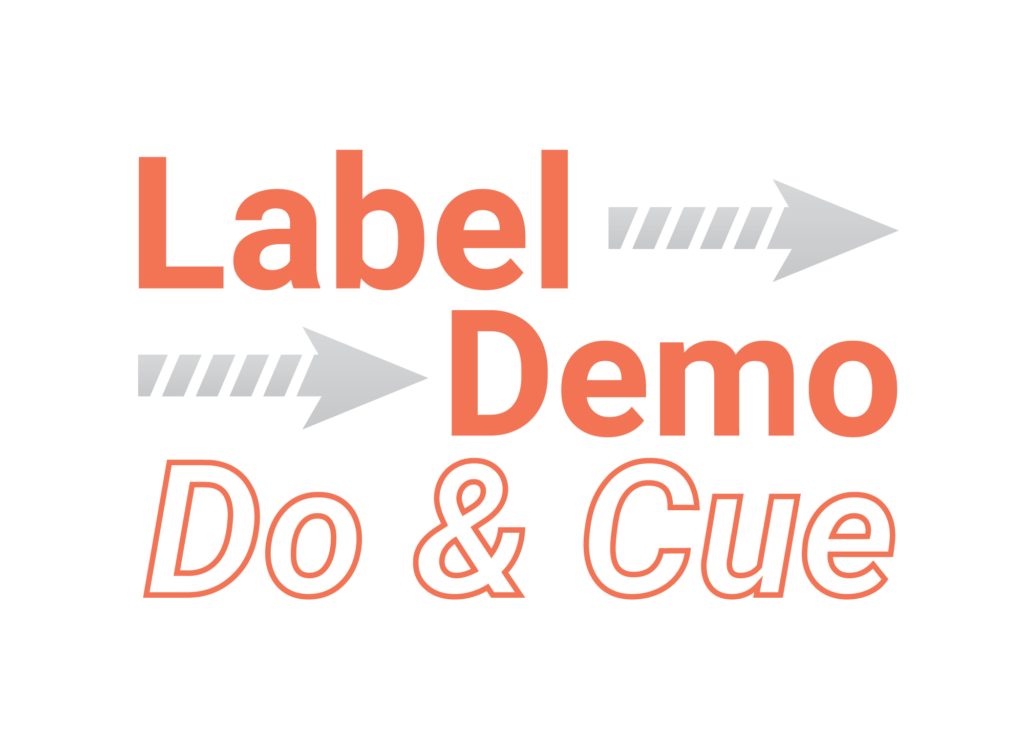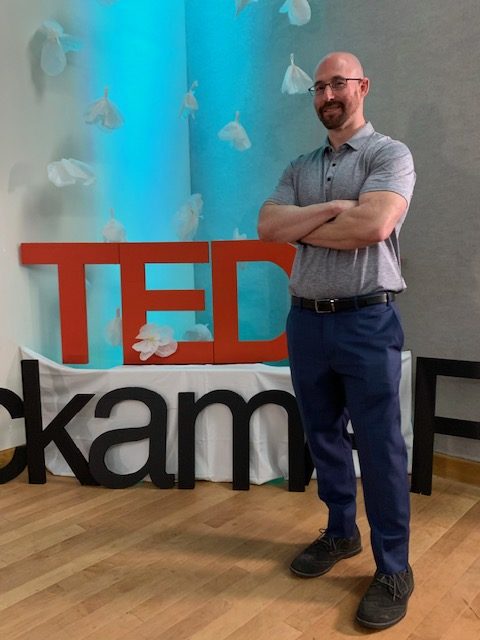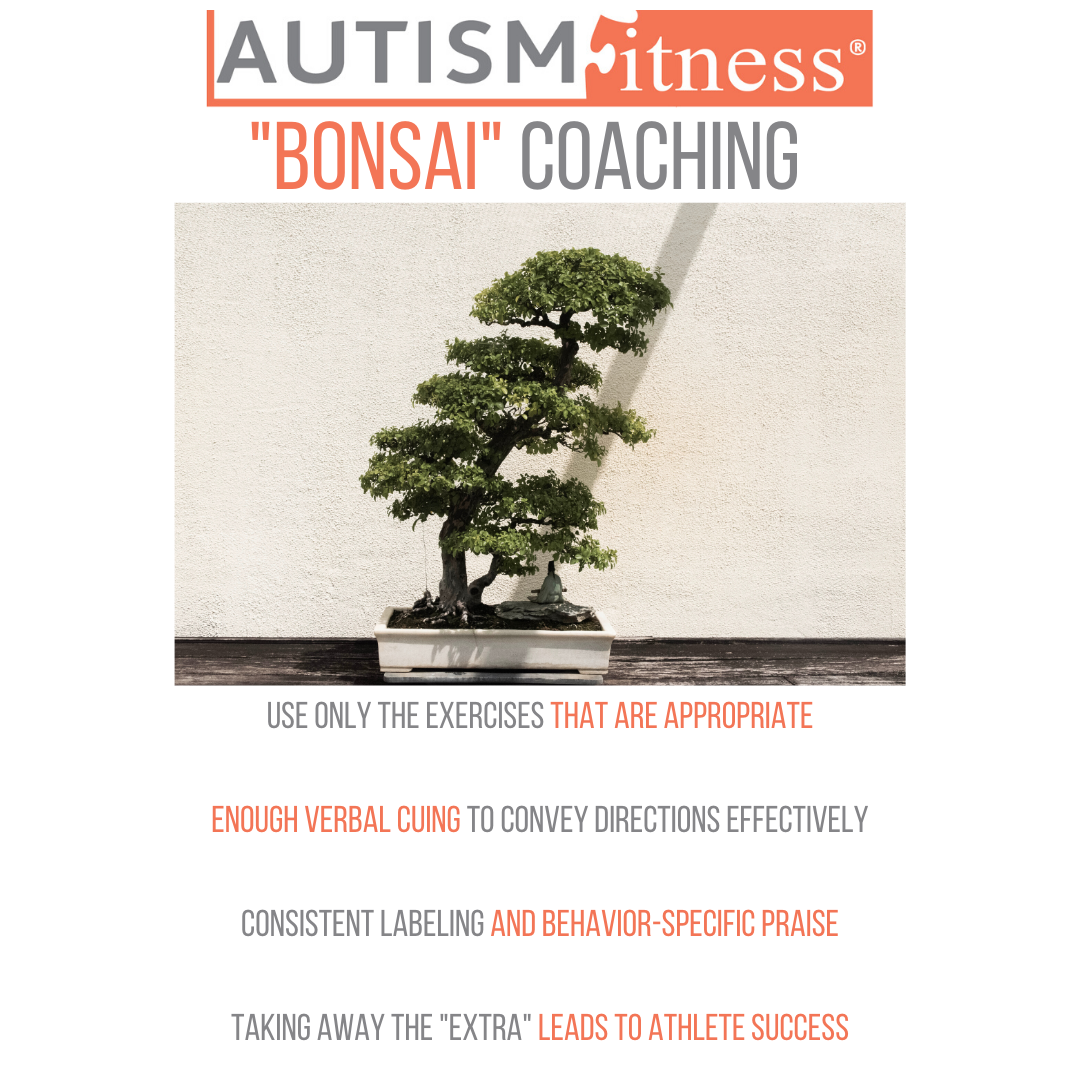“First, which hand?”
“Right hand”
“That’s your left. Which one is your right hand?”
Debbie holds up her right hand.
“That’s your right hand! Alright, cool, walking band pulls with your right hand.”
Coaching fitness programs for the autism population is taking the art of Bonsai to strength and conditioning. We eliminate noise, static, whatever you want to label as extraneous. Successful fitness and adapted PE programs with the autism population require a keen sense of senses.
So what is effective fitness coaching for the autism population? What does it look and sound like? Is there an ideal approach?
There is no one perfect approach, as individuals with autism and other neurodiverse diagnoses can vary widely in their behavioral and cognitive abilities. It is important to always provide care and respect to our autism athletes.
How is Karl responding to directions for performing a bear walk? Can I fade my hand-over-hand prompt for Jack’s single arm Sandbell press and maintain integrity of the movement? Is Kelvin going to get over-anxious if introduced to a new variation of the squat?
When fitness coaching for the autism, special needs/neurodiverse population, there are many considerations and challenges. It’s not only about having the ‘right’ exercises, but also how we provide behavior support and the ways we communicate.
We start with three questions;
- What is happening physically?
- What is happening adaptively/behaviorally?
- What is happening cognitively?
The answers are crucial to exercise selection, program design, and positive behavior support for our autism and neurodiverse athletes. Autism is complicated. The strength and motor planning deficits are complicated. The odd, occasionally near-light speed escalation of anxiety and off-task behaviors are complicated.

What makes an autism fitness program successful is a rational, reliable strategy for each situation to support growth and development in each area of ability (physical, adaptive, cognitive). Taking the guess work, or most of it, out of programming clears the path to short- and long-term benefits for the athlete.
The two most common coaching errors with respect to the autism/ASD population are over-coaching and exercise selection (typically too challenging). Over-coaching in the form of over-explaining can be confusing and elevate anxiety. We often need to simplify verbal instruction for athletes with autism who have difficulty with processing these directions. Here’s one set of instructions likely to be problematic;
“First hurdle steps, then Sandbell slams, then bear walk from the blue cone to the green cone.”
Many of the athletes I’ve coached will start with bear walks. They’re not being deliberately off-task or defiant, it’s simply a matter of hard-wiring. The verbal directions were too extensive and our athlete was unable, at least for now, to hold them in place.
In the Autism Fitness Level I Certification we teach a strategy called “Label/Demo/Do & Cue” as an efficient way to teach and facilitate learning different exercises with safety, efficiency, and comprehension. Labeling refers to naming the exercise. Demonstrating is our showing the athlete proper form and performance, and Do/Cue gets them into the activity quickly so that we can coach as they learn.

In real life (IRL, LOL!) we would take each one of the aforementioned exercises (hurdle steps, Sandbell slams, and bear walks) and teach them separately. Consider that physical and adaptive skills can be mutually exclusive. An athlete might have proficiency with all three exercises, yet still require verbal direction at each stage;
“First hurdle steps”
(Athlete performs hurdle steps)
“Great hurdle steps and getting your knees up! Now you have eight Sandbell slams.”
(Athlete performs 8 Sandbell slams)
“Those were some powerful Sandbell slams! Now bear walk from the blue cone to the green cone.”
(Athlete completes the bear walk)
Using this strategy we avoid overwhelming the athlete and having to back-track. In Autism Fitness programming, we have “Label/Demo/Do & Cue” as a mantra, providing the coach with more time to teach the exercise rather than explaining it. Our goal is to maximize “down” time and increase on-task behavior, wherein the athlete is learning and mastering each exercise.
Given the strength, stability, and motor planning deficits common to the autism population, it is imperative that as much of a session as possible is dedicated to them being in action.
Labeling the exercise has a secondary benefit. As the athlete becomes more familiar with the name of a movement, he/she can request in or make an informed, motivated decision when an instructor provides options. We use this strategy with consistent success, asking athletes whether they would prefer to do “push throws or overhead throws first” during our medicine ball warm-up.
The structure here is key. Providing choice between exercises sets up a few important contingencies. First, the coach is giving structure. Both medicine ball throws will be performed, however the athlete gets to choose the order.
The open-ended option “What do you want to do?” could be overwhelming or the athlete may choose something entirely outside the realm of exercise (“bathroom” and “break” are common inserts here). Providing choice within structure enables us to teach what needs teaching and coach what needs coaching while still leading towards autonomy. Over time, many of our athletes wind up “designing” their own sessions with frequent choices being offered, usually with respect to the order of exercises.

Exercise selection is crucial for the autism population. Focusing on the foundation of movement patterns (locomotion, pushing, pulling, squatting, hinging, and crawling) we are able to address some of the most pervasive physical deficits common to this demographic. These are often referred to or diagnosed as “low tone,” “weak core,” or “weak trunk stability” in children with autism.
Meaningful exercise for autism or neurodiverse athletes is not about variety, rather building baseline skills that transfer or generalize to other situations and activities of daily living (ADLs). It can take some time for these movement skills to establish. In multiple cases learning to hinge properly during the scoop throw has taken our athletes a few years to master.
Focusing on a few exercises also gives our athletes the opportunity to learn the name and typical order in which the exercises can be performed. Whereas our warm-up/mobility section nearly always features hurdle steps, overhead resistance band walks, bear walks/crawls, and medicine ball throws (push, overhead, and scoop), our strength/focus section includes squats, presses, pulls, farmers walks, and heavy carries. While these can certainly be described as the ‘Best Exercises for Autism,” the reality is they are essential movements for virtually every human being.
Using a “limited” selection of exercises enables our ASD athletes to master the baseline skill (physical), become accustomed to the name and instructions around the exercise (cognitive), and be familiarized enough with each exercise that it can become reinforcing, where the athlete is motivated (adaptive) to engage.
The art of empathetic coaching requires us to ask one overarching question; What is it like for you to be coached by me right now? We acknowledge our athlete’s current abilities and make well-guided plans for their successes.

Eric Chessen, MS, is the Founder of Autism Fitness. An Exercise Physiologist with an extensive ABA background, Eric has spent 20 years developing fitness programs for the Autism, Special Needs, and Neurodiverse populations. He is the creator of the Autism Fitness Certification and PAC Profile Method. Learn more at AutismFitness.com
